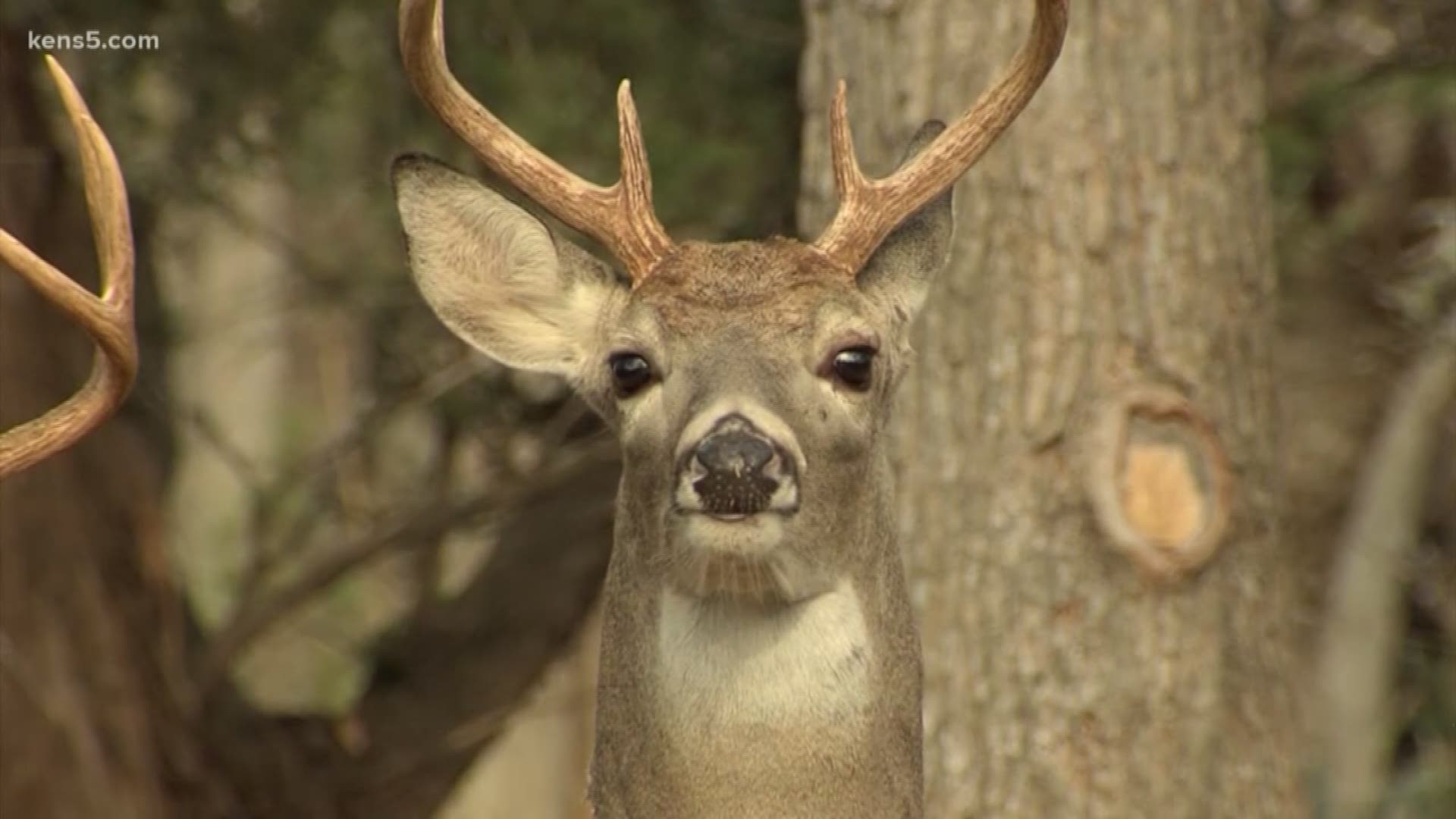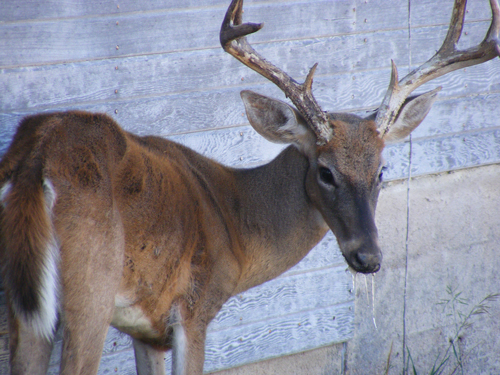KIMBLE COUNTY, Texas — Editor's Note: The above video was published in December regarding Texas Parks & Wildlife keeping Chronic Wasting Disease in check.
Chronic Waste Disease has been found in a five and a half-year-old white-tailed deer breeding facility, making it the first positive detection of the disease in the county, Texas Parks & Wildlife says.
The findings were reported on Thursday after the tissue samples were submitted to Texas A&M Veterinary Medical Diagnostic Laboratory, then confirmed for CWD by the National Veterinary Services Laboratory in Ames, Iowa.
Texas Parks and Wildlife issued new regulations in December after a deer in Val Verde County tested positive for the disease.
The illness, which is related to mad cow disease, infects moose, deer, elk, and reindeer and can spread easily. The disease attacks the animal's brain, causing drooling, instability, lack of coordination, loss of fear of humans, among other symptoms.
Officials say they have taken immediate action to secure the animals at the Kimble County deer breeding facility, with plans to test for CWD.
"TAHC is working with TPWD to quickly assess and determine the extent of diseases prevalence in the herd and mitigate the spread of CWD," said Dr. Susan Rollo, TAHC State Epidemiologist.
Animal health and wildlife officials have not said how long or to what extend the disease has been present at the facility, but the breeder says they have had an active CWD surveillance program since 201 with no positive detections until now.
The disease is spread through direct contact with the infected animal, and indirectly through contact with a contaminated environment.
While there's no evidence the disease can be contracted by humans, the stakes are still high.
“The economic impact to Texas is over $2 billion just attributed to deer hunting," said TPWD wildlife director Clayton Wolf, adding that the industry is particularly beneficial to rural communities.
TPWD has a website with more information about CWD, as well as the regulations associated with animals harvested in areas affected by the disease. The website also keeps current information about the location of containment zones, check stations and certified CWD collectors.


